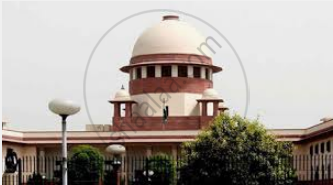Advertisements
Advertisements
प्रश्न
Match the contents of Column A with those of Column B:
| Column A | Column B |
| 1. Parliament | (a) village courts |
| 2. Supreme Court | (b) hears criminal cases |
| 3. A District Judge | (c) hears civil cases |
| 4. A Sessions Judge | (d) decides the number of judges in the Supreme Court. |
| 5. Nyaya Panchayat | (e) is the highest court of appeal in India. |
उत्तर
| Column A | Answers |
| 1. Parliament | (d) decides the number of judges in the Supreme Court. |
| 2. Supreme Court | (e) is the highest court of appeal in India. |
| 3. A District Judge | (c) hears civil cases |
| 4. A Sessions Judge | (b) hears criminal cases |
| 5. Nyaya Panchayat | (a) village courts |
APPEARS IN
संबंधित प्रश्न
Fill in the blanks:
The records of the High Court serve as ____________ for _____ courts in future cases.
Choose the correct answer:
Disputes between the union government and the state government fall under the___________Jurisdiction of the Supreme Court
Choose the correct answer:
The High Court is the highest court of justice in a _________.
State whether the following is true or false:
The Chief Justice of the Supreme Court is appointed by the Prime Minister of India.
Answer the following question in one or two words/ sentences:
What is the objective of the Legal Aid Scheme?
Answer the following question briefly:
The Supreme Court is the highest judicial body in the country. In this context, explain: Its original Jurisdiction
Answer the following question briefly:
The Supreme Court is the highest judicial body in the country. In this context, explain: Its Appellate Jurisdiction.
This is a picture of the apex Indian count.

Who appoints the judges of the Supreme court?
Fill in the blanks:
The Supreme Court of India consists of a _____ and _____.
Fill in the blank:
The judges of the High Court retire at the age of ______.
